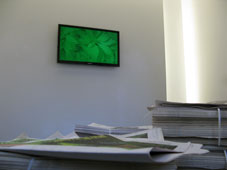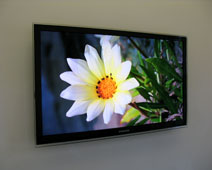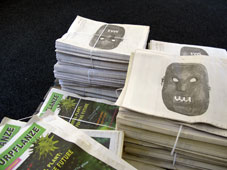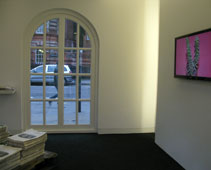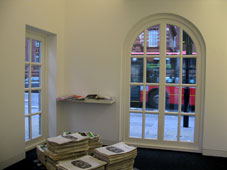Melanie Jackson is investigating the impulse for form. She has taken a lead from Goethe's notion of the Urpflanze. The Urpflanze – or the primal/primordial plant - is Goethe's imaginary plant that contains coiled up within it, the potential to generate all possible future forms. The investigation takes her to behold scientific research, industry and the economy of the material. Drawing on the intimacies of knowledge at the nanoscale to the spectre of gargantuan monstrosities, there is an intrigue in the primordial to the yet-to-be-created.
In Scene 1: Dirt she begins to make a link between earth and the screen: between the viscera and potential of clay to assume form and the material formulation of the Plasma screen itself.
In the eighteenth century the development of sophisticated techniques of ceramic production signified a victory of chemistry and culture and capital over formlessness. It pushed the capacity of the material to accommodate highly detailed representations, radiate colour, sheen, to perform.
Contemporary screens push the material capacity of liquid crystals to accommodate high definition imagery. There is a sense of a quest for ever sharper imagery, mediated through liquid crystal technology. Like clay, liquid crystals also have a visceral biological and mineral morphology that can collapse into formlessness yet carries the potential to assume (or emit the image of) any form. The work teases out this dynamic between the desire for indexical precision, and for fantasy – for unknown forms to appear. It traces the production of clay from the clay pit to the factory floor, to the museum and to the tea room.
The soundtrack is prompted by the title track from Gruppo Improvvisazione Nuova Consonanza's 1970 Album The Feed-back.
This screening is an extension of The Urpflanze (Part 1) exhibited at The Drawing Room, London. Part 2 will be made in the future.
The free tabloid newspaper The Urpflanze is available to take from the screening, which grew from dialogue between Melanie Jackson and the writer Esther Leslie. They harvest disparate manifestations of plant life and the natural world - from EU policy documents on biotechnology, to the Jolly Green Giant, bizarre tales of space pumpkins and the genetic heritage of fluorescent underwater life.
